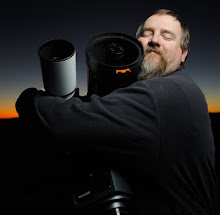(Don't worry, we'll be back to astronomy stuff soon.)
Collected from the internet:
It was late fall and the Indians on a remote reservation in South Dakota asked their new chief if the coming winter was going to be cold or mild. Since he was a chief in a modern society, he had never been taught the old secrets. When he looked at the sky, he couldn't tell what the winter was going to be like. Nevertheless, to be on the safe side, he told his tribe that the winter was indeed going t o be cold and that the members of the village should collect firewood to be prepared.
But, being a practical leader, after several days, he got an idea. He went to the phone booth, called the National Weather Service and asked if the coming winter was going to be cold. "It looks like this winter is going to be quite cold," the meteorologist at the weather service responded.
So the chief went back to his people and told them to collect even more firewood in order to be prepared. A week later, he called the National Weather Service again. 'Does it still look like it is going to be a very cold winter?'
'Yes,' the man at National Weather Service again replied, 'it's going to be a very cold winter.'
The chief again went back to his people and ordered them to collect every scrap of firewood they could find. Two weeks later, the chief called the National Weather Serviceagain. 'Are you absolutely sure that the winter is going to be very cold?'
'Absolutely,' the man replied. 'It's looking more and more like it is going to be one of the coldest winters we've ever seen.'
'How can you be so sure?' the chief asked.
The weatherman replied, 'The Indians are collecting firewood like crazy.'











